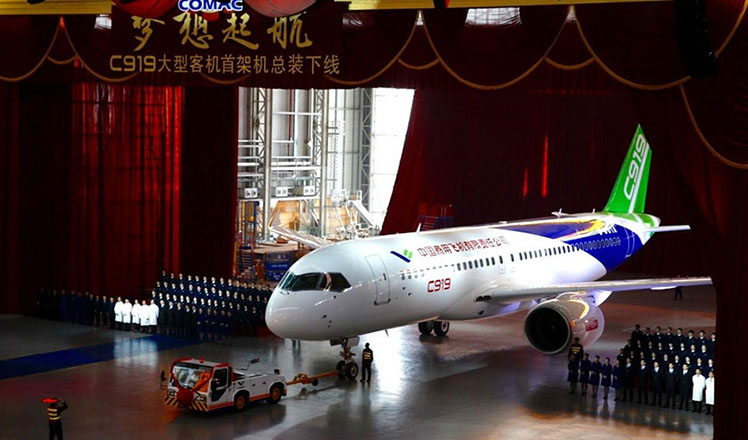Combining man and machine in space travel
Updated: 2015-11-14 00:07
By Li Xueqing in Shanghai(China Daily USA)
|
|||||||||
Cyborgs may well be the future of space exploration, said Roger Launius, a space historian and associate director at the Smithsonian Institution’s National Air and Space Museum.
During his guest lecture on robots and space exploration at New York University’s Shanghai campus on Oct 29, Launius spoke about how technology and machines are needed to help mankind progress deeper into the universe, given the human body’s limitations in outer space. He cited how numerous conditions in space can be detrimental to health, such as invisible “lunar dust” and the high levels of radiation on the moon.
The concept of a cyborg was first proposed in 1960 when Manfred Clynes and Nathan Kline aimed to reengineer the human body for spaceflight. Their idea was adopted by the National Aeronautics and Space Administration (NASA) in 1963.
The lecture also touched on the argument of whether robots or humans should be the ones used to explore space. The majority of space exploration missions to date have been carried out by robots and Launius said that the famous Voyager program, which comprises two unmanned probes used to explore the outer Solar System, and the unmanned expeditions to Mars have proved that robots can perform beyond our expectations. The use of robots also removes the risk that humans have to take when traveling into space.
However, humans are thought to be able to react better to unforeseen circumstances, and there are also those who view putting boots on another planet to be more significant than having an unmanned rover send data back to Earth. Cyborgs, Launius contends, combine the best of these two camps of thought.
On the topic of interstellar travel, Launius contends that there is still little possibility of humans achieving that, saying that he does not believe the commonly seen method in sci-fi movies — using a warp drive to travel faster than light — will ever be possible. Another theory involves the use of intergenerational space ships as interstellar travel would require hundreds of years. Again, Launius cannot see that becoming a reality.
Launius, who is the co-author of the book Robots in Space: Technology, Evolution, and Interplanetary Travel, added that while the idea of merging man and robot may seem “crazy”, he believes that many people today are already akin to cyborgs, referring to how devices such as pacemakers and insulin pumps have helped humans rectify their medical conditions and live longer.
“Let me suggest to you that the primary challenge in human space flight is not so much technological but biological,” said Launius. “Future space activities will be based on bio-engineering, nano-technology and cyborg concepts.”
Launius admitted that creating cyborgs will likely be a highly controversial topic that raises questions about the nature of life and what should be considered human, though these are questions that could prove beneficial for the progression of humanity.
- Valletta summit enhances political will to solve migration crisis amid concerns about EU consolidation
- S Korean court upholds life sentence for ferry captain
- China, US prepare for dialogue to fight cybercrime
- Myanmar's opposition to independently form government
- Obama signs executive order on lifting sanctions against Liberia
- Reputed New York mobster, 80, cleared in 1978 'Goodfellas' heist

 Top 10 regions that led the shopping spree on Singles Day
Top 10 regions that led the shopping spree on Singles Day
 Traditional Yuju Opera faces dilemma
Traditional Yuju Opera faces dilemma
 Eat more beans, peas, lentils and chickpeas, UN says
Eat more beans, peas, lentils and chickpeas, UN says
 Veterans Day marked across the United States
Veterans Day marked across the United States
 Antalya: Beautiful place where G20 will be held
Antalya: Beautiful place where G20 will be held
 Interesting trends revealed by Singles Day
Interesting trends revealed by Singles Day
 10 delicious soups you can't miss in cold winter days
10 delicious soups you can't miss in cold winter days
 Xi-Ma meeting lauded in US
Xi-Ma meeting lauded in US
Most Viewed
Editor's Picks

|

|

|

|

|

|
Today's Top News
Obama, Netanyahu at White House seek to mend US-Israel ties
China, not Canada, is top US trade partner
Tu first Chinese to win Nobel Prize in Medicine
Huntsman says Sino-US relationship needs common goals
Xi pledges $2 billion to help developing countries
Young people from US look forward to Xi's state visit: Survey
US to accept more refugees than planned
Li calls on State-owned firms to tap more global markets
US Weekly

|

|








